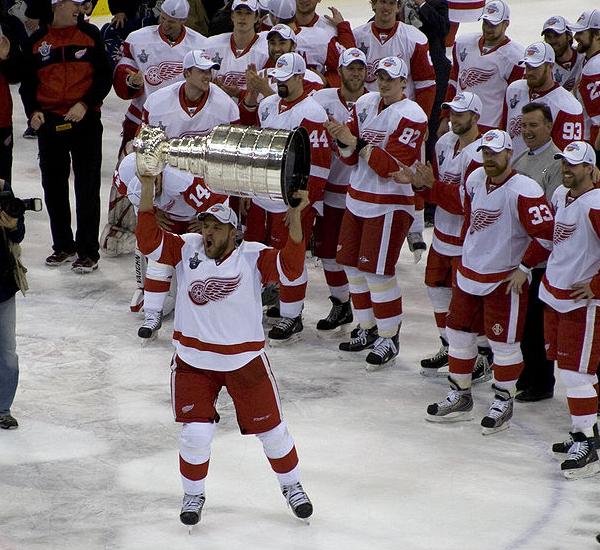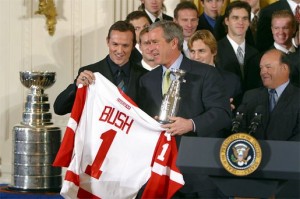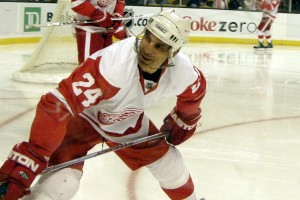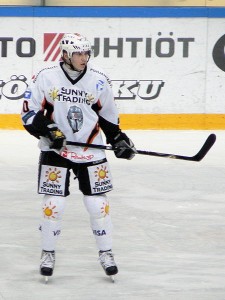
With nearly half the season in the books, this year’s edition of the Edmonton Oilers sit dead last in the Western Conference. Despite one of the highest payrolls in the league, the team has been grossly inept in all phases of the game. More specifically, the Oilers have:
- The 3rd worst defensive record in the NHL (3.24 GA per G)
- The 4th worst penalty killing percentage in the NHL (76.3%)
- The worst faceoff percentage in the NHL (46.3%)
- The 4th lowest shots per game total in the NHL (28.1)
Despite this year’s debacle and the largely mediocre results of the preceding decade and a half, there is still a large contingent of Oiler fans who insist the organization is on the right path and further patience must be exercised. For these diehard fans who remain ever optimistic about the prospects of their beloved Oil, I respectfully bring to your attention a must read article in which Detroit GM Ken Holland shares his Nine Secrets to Stanley Cup Success.
It is exceedingly rare that those at the top divulge their secrets while still in the game, but that is precisely what Holland has done in sharing his blueprint for building the best hockey team of the last decade. In doing so, not only does Holland provide invaluable insight into the critical factors required to excel in today’s NHL, he also provides a ready comparison for teams wishing to measure themselves against the league’s elite.
So, how do the Edmonton Oilers compare to the Detroit Red Wings in their approach to winning? Read on to see how the two organizations compare on each phase of Holland’s Nine Step Program:
Good People
It sounds patently obvious, perhaps even cliché, but Holland’s mission to hire good people and get out of their way is one many teams, the Oiler included, fail to accomplish.

Just look at the Hall of Fame talent Holland assembled in the Red Wings front office: Jimmy Devellano, Scotty Bowman, Steve Yzerman. With these 3 men alone, Holland built a management dream team with Stanley Cup pedigree in every phase of the game (management, coaching, playing), all united under one common goal: winning the Stanley Cup.
By comparison, the Edmonton Oilers were for many years an old boys club with the vast majority of power vested in one or two key decision makers with the requisite ties to the Oiler dynasty of the eighties. From Glen Sather to Kevin Lowe, the Oilers remained confident that they had the key man at the top whilst failing to invest similar expertise in every facet of their organization, from player scouting and development to coaching and salary cap management. In recent years, the Oilers have attempted to rectify this situation, broadening the championship experience of their front office team with the addition of GM Steve Tambellini and Co- Head Coaches Pat Quinn and Tom Renney. On this front at least, the Oilers appear to be taking some steps in the right direction.

Players Learn from Other Players
Once a strength of the Oilers’ organization, this is now a glaring weakness with the current Oiler squad seriously lacking quality veterans capable of leading and mentoring the future stars of tomorrow. Far from being stars, the current crop of Oiler vets consists of either career journeymen (Ethan Moreau, Steve Staois, Fernando Pisani) or one dimensional players lacking championship pedigree (Ales Hemsky, Shawn Horcoff, Lubomir Visnovsky, Sheldon Souray). If true leadership comes from actions not words, then what are the young Oilers to make of current captain Ethan Moreau who’s committed nine penalties in the offensive zone this season, many of them leading to crucial goals against the Oilers’ decidedly weak penalty kill?
Uncovering Draft Gems
The number one failing in the Oiler organization over the last 25 years is their poor record in drafting and developing NHL calibre talent.

Oiler drafts are littered with infamous first round busts (Jason Bonsignore, Steve Kelly, Jesse Niinimaki, etc.), the number of which is far in excess of the rare jewel the Oiler scouts have uncovered (Ryan Smyth, Ales Hemsky) and these issues extend to the later rounds as well.
The current defense of the Oiler scouting department is the argument that a number of their picks have in fact played a significant number of games with the parent club (e.g. Sam Gagner, Andrew Cogliano, Marc-Antoine Pouliot). Unfortunately, this argument is a bit like saying that a number of people bought the Chevrolet Vega, so it must’ve been a good car. The sad reality is the Oilers are a talent starved organization. Many of the players toiling for the team are good enough to make the Oilers or one of the more competitive teams in the AHL. Very few of the Oiler ‘prospects’ are legitimate NHLers. Even fewer still (Jordan Eberle, Magnus Paajarvi-Svensson, Jeff Petry) have the talent to become true stars at the NHL level. For a team struggling to attract top talent via free agency or trade, improving their performance at the draft table must be priority one in the rebuilding of the Edmonton Oilers.
On-Ice Discipline
Holland’s comments here basically boil down to the belief that an organization needs to define who they are and then stick to that vision, come hell or high water. The Edmonton Oilers certainly stick with their guiding principles. Unfortunately, they are principles rooted in the free wheeling hockey of the eighties and not the tactically complex hockey of the twenty first century. Since their dynasty heyday, the Oilers have continued to extol the virtues of speed, speed, and more speed, while virtually ignoring all of the other attributes (size, grit, leadership, defense, discipline, sacrifice, and most importantly, scoring touch) that defined those championship Oiler teams of the past.
In a rare concession to modern tactics, former coach Craig MacTavish deployed the trap with stunning efficiency in the Oilers’ run to the Stanley Cup Final in 2006. Despite that surprising success, their lone postseason run in the last 15 years, the Oilers typically revert to form as a strong forechecking, fast skating club that gives up far too many odd man rushes while failing to capitalize on their offensive chances due to a decided lack of finish in the forward ranks. Oiler goalies are almost inevitably hung out to dry with high shot totals against, prompting the organization to continually invest a large chunk of their payroll in a top flight goaltender to staunch the bleeding from the team’s continual failure to play sound defensive hockey.
Puck Possession
To be effective with a puck possession approach, teams must have three critical components:
1) Talented players capable of protecting the puck in high traffic areas whilst avoiding aggressive checking.
2) An emphasis on pinpoint passing with the ability to consistently execute tape to tape passes to facilitate a strong transition game
3) Sound positional play and defensive discipline in all three zones.
On this point, more than any other, it is apparent that the Oilers have attempted to emulate the Red Wings approach by investing heavily in offensively gifted defensemen capable of starting the rush with a well aimed pass or by headmanning the puck themselves through the neutral zone. Unfortunately, while the Wings defensemen are great, the Oilers rearguards are merely good and they consistently fail to receive the critical backchecking support from the forwards need to mask their fatal defensive flaws.
Like their defensive counterparts, the Oiler forwards are similarly unable to consistently execute a puck possession game with turnovers resulting regularly from the forwards inability to protect the puck or advance it effectively with well aimed passes. All too often, the Oilers’ attempts at puck possession fail as a result of a poorly executed pass in the neutral zone or an ill advised dump-in followed by the failure of the Oilers’ smallish forwards to regain puck possession in the offensive zone.
The team’s most critical failing however is their positional play. Red Wing players can attack the opposition`s puck carrier with reckless abandon, confident in the knowledge that their teammates will be in the proper position to avoid a crucial defensive lapse. Regular watchers of the Oilers have lost count of the number of times that an ill-timed forecheck has resulted in a stretch pass leading to an opponent breakaway or worse yet, the sight of two defensemen rushing to check one forward behind the net leaving the slot free and clear for the opposition`s best sniper.
Ultimately, puck possession is the Oiler way. It is a style the team played with speed and verve during the team’s dynasty years and it is a style the team will always emphasize. Unfortunately, the team simply lacks the talent to properly execute this style now which leads back to the team’s deficiencies at the draft table. Until the Oilers solve this Catch 22, they’ll be struggling to catch the other teams in the league and will remain mired in the Western Conference basement.
This leaves Ownership, Salary Cap, Reclamation Projects and Patience as the remaining points on Holland’s Nine Steps to Stanley Cup Success. How do the Oilers stack up in those critical areas? I’ll address these and other steps for success in the conclusion of this two part series next week. Until then, Happy New Year and remember, keep your head up and your stick down!
Excellent article. Looking forward to the next one.